And, just for Adwoa, some more sewing machine sightings. She remarked about the table the last one was mounted in, and it’s worth noting that around these parts, probably 70% of the sewing machines I see are mounted in nice tables, usually very swank Danish-style tables…
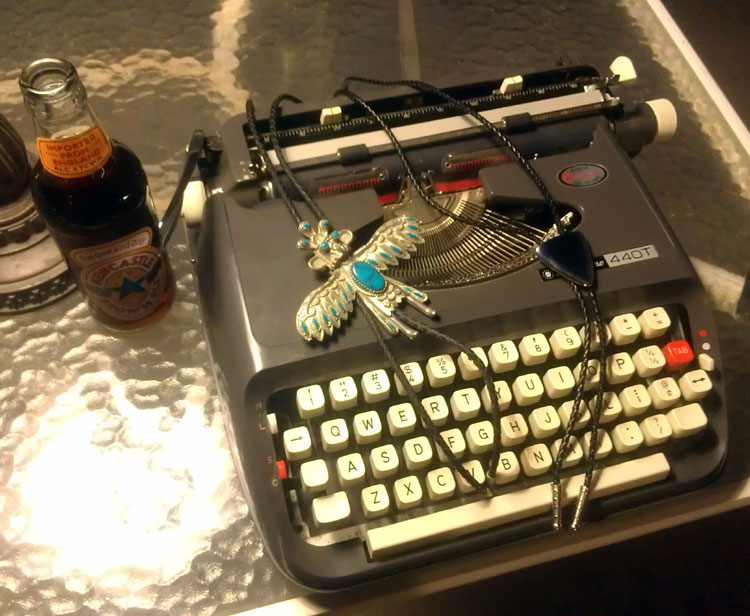
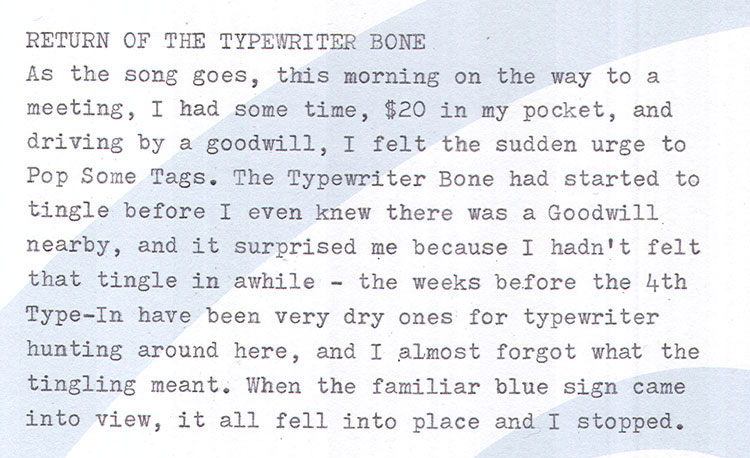
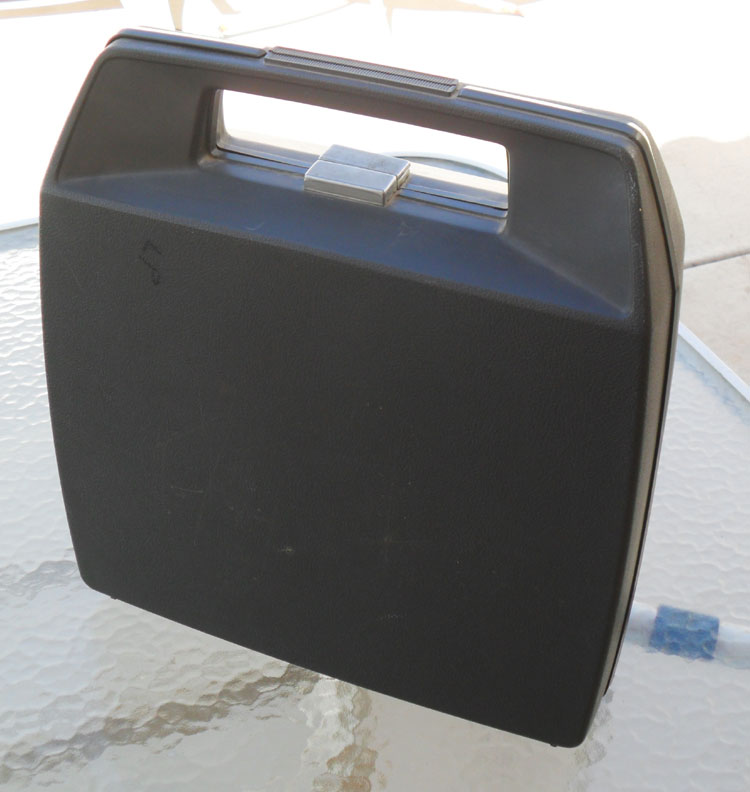
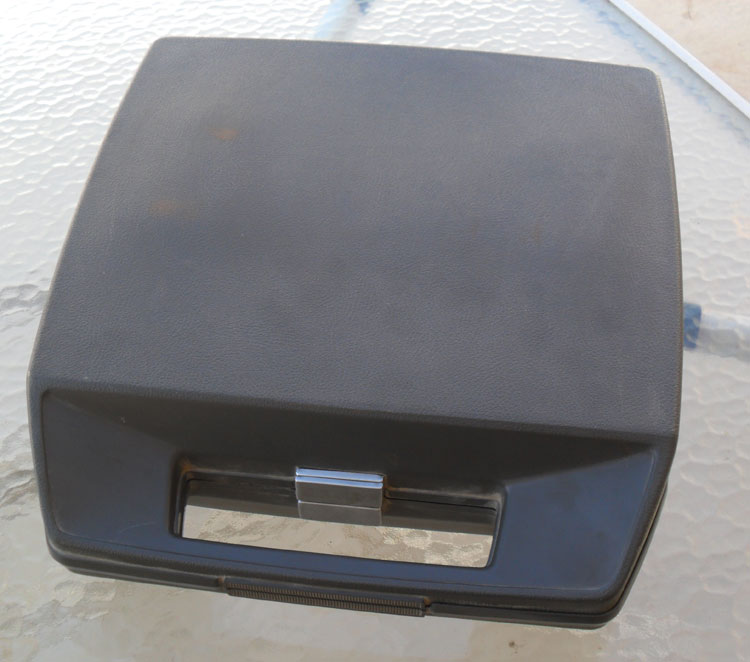
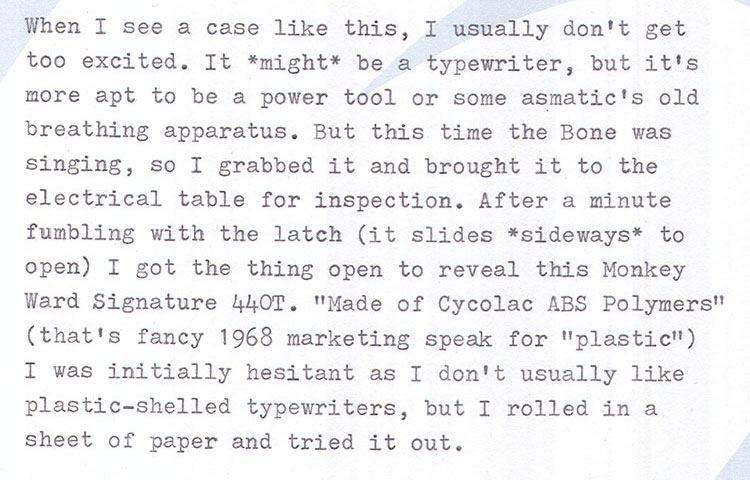
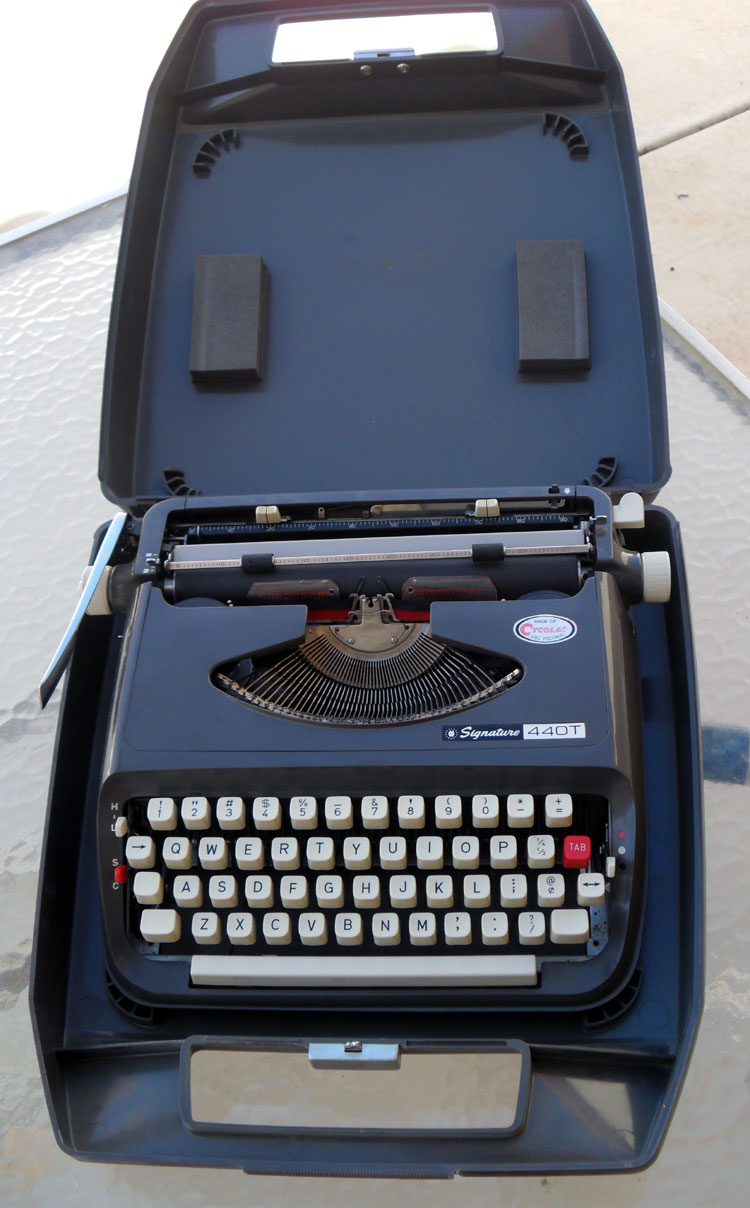
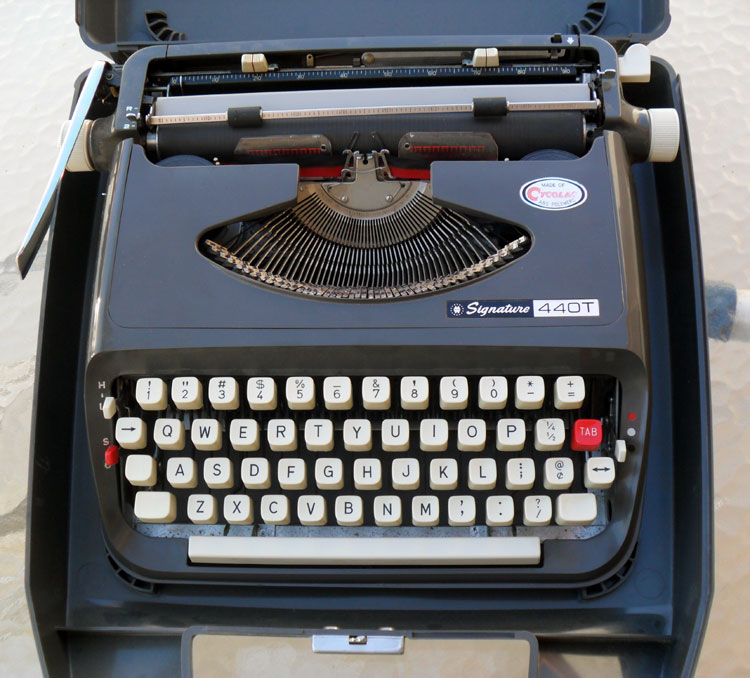

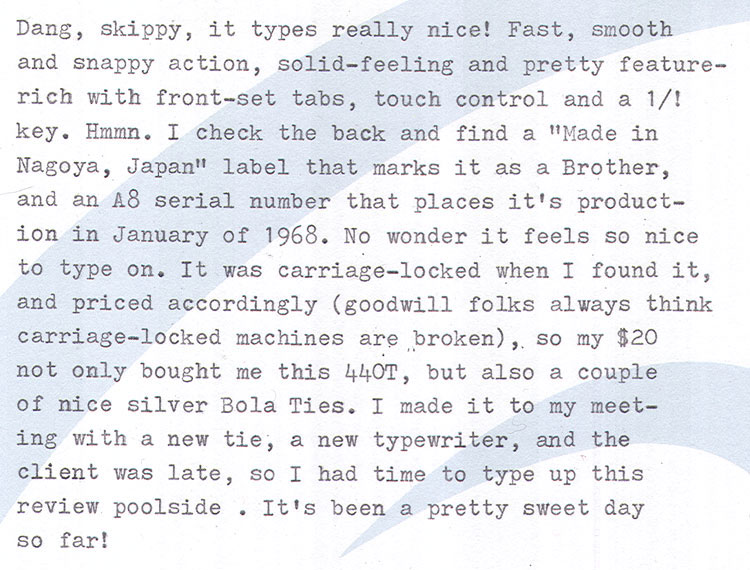
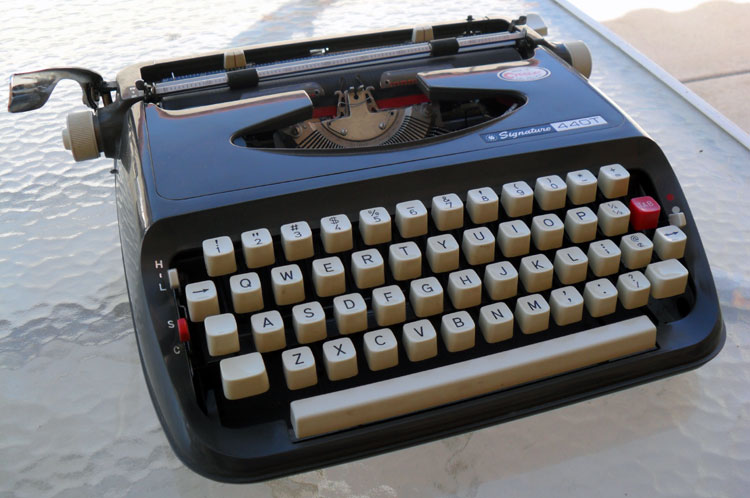
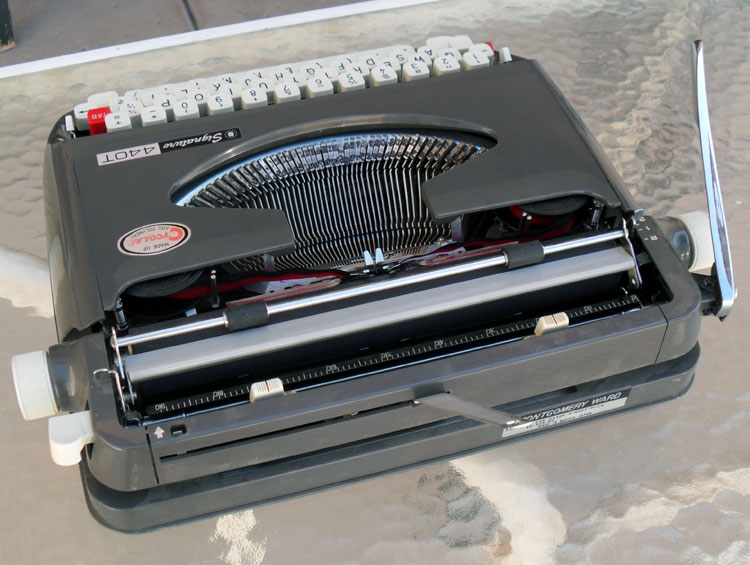
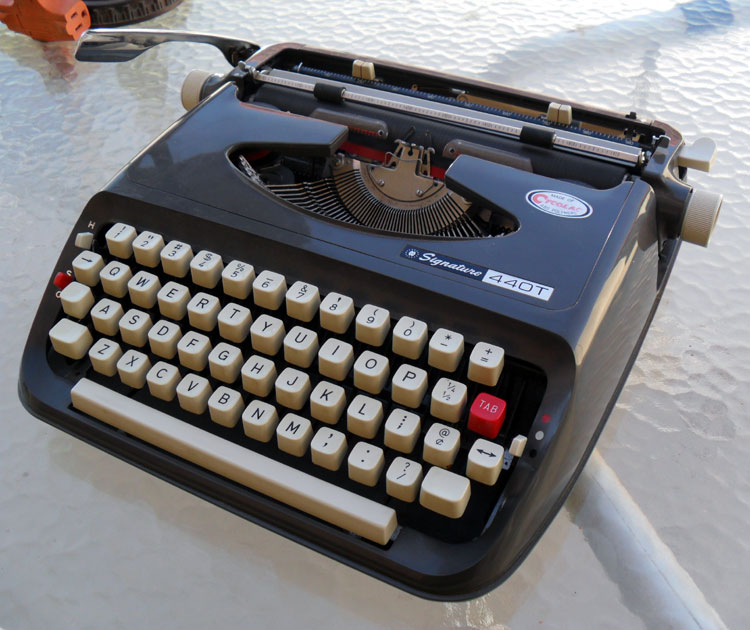
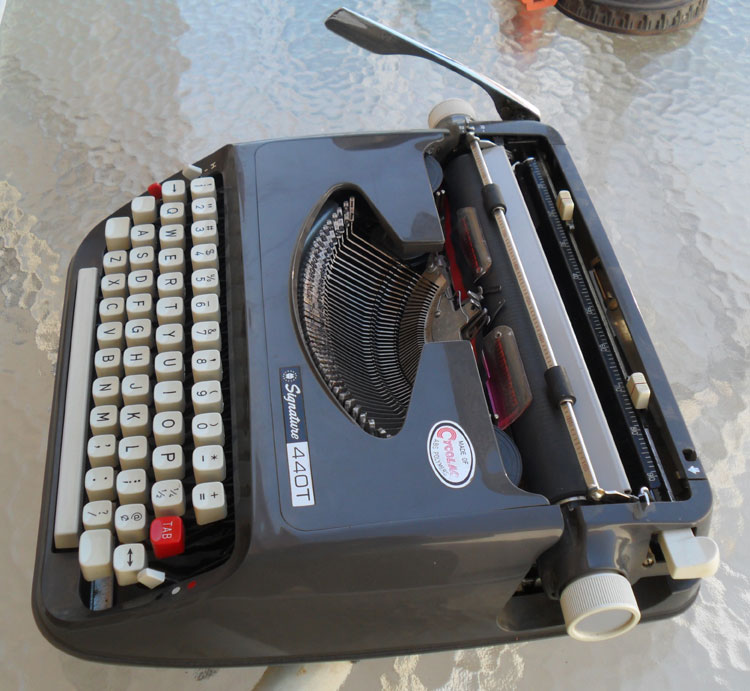

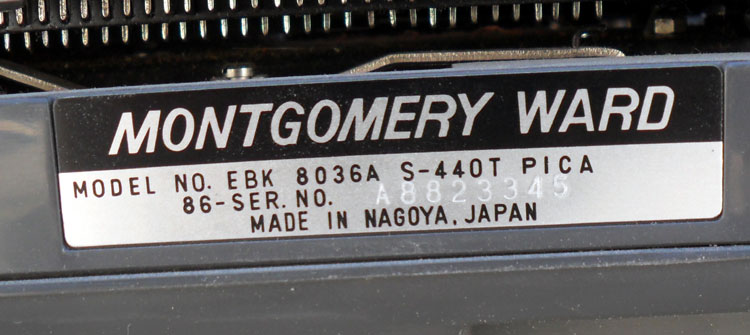
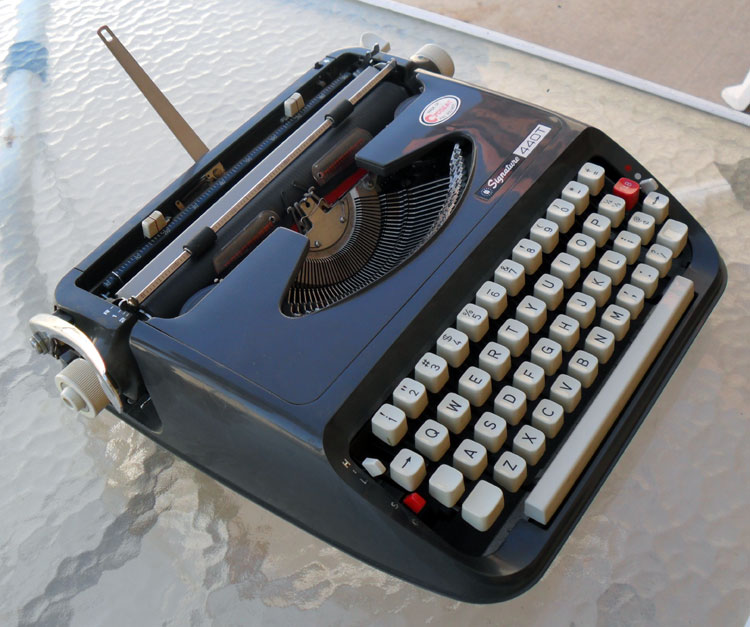

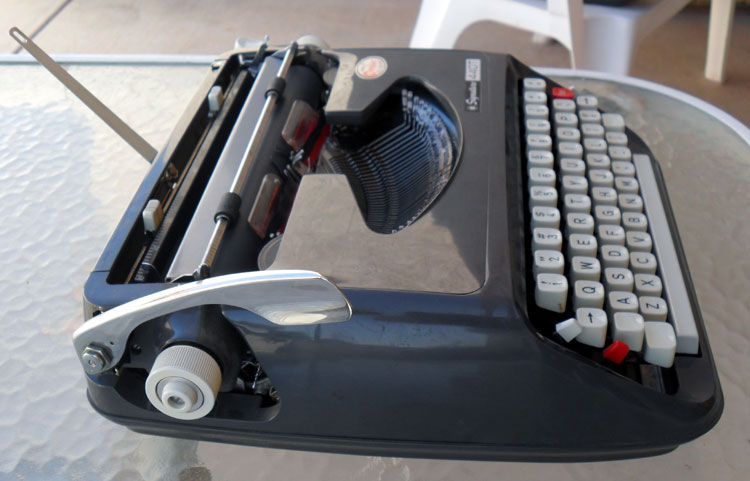
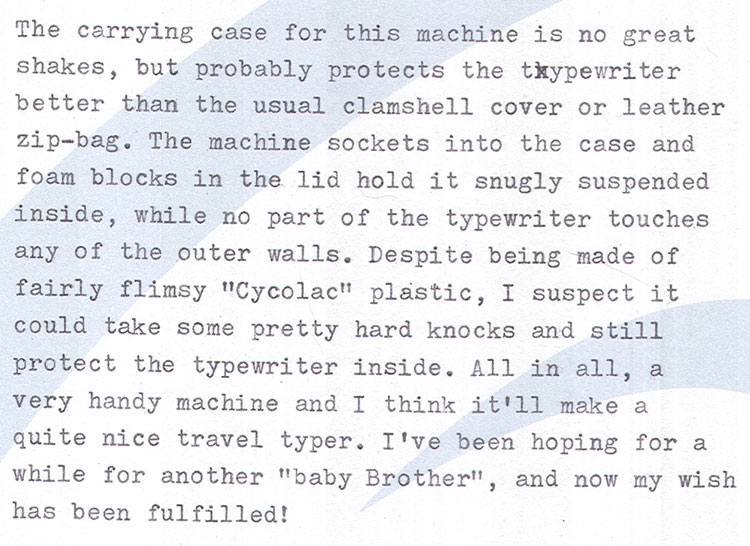
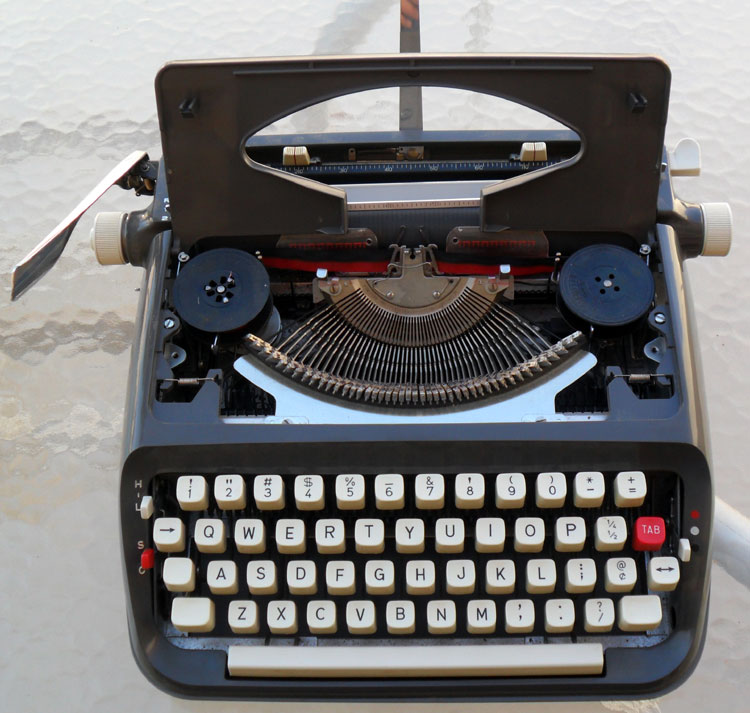
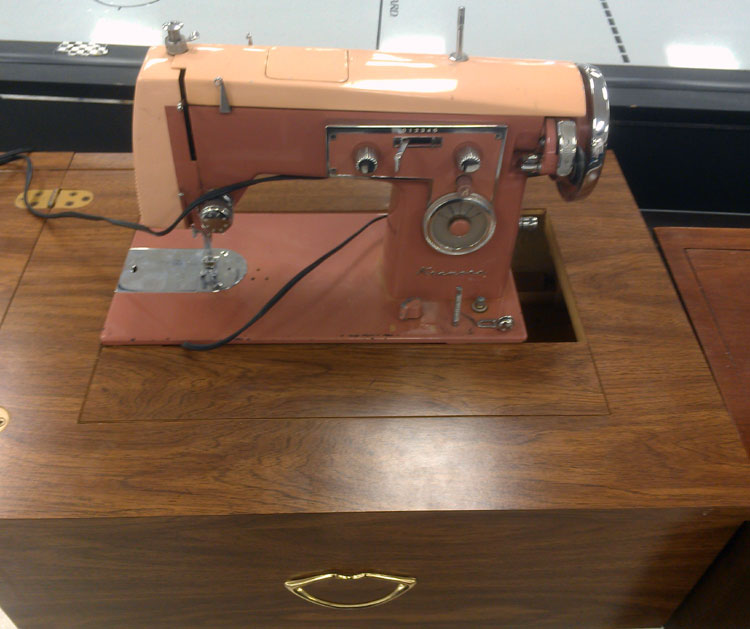
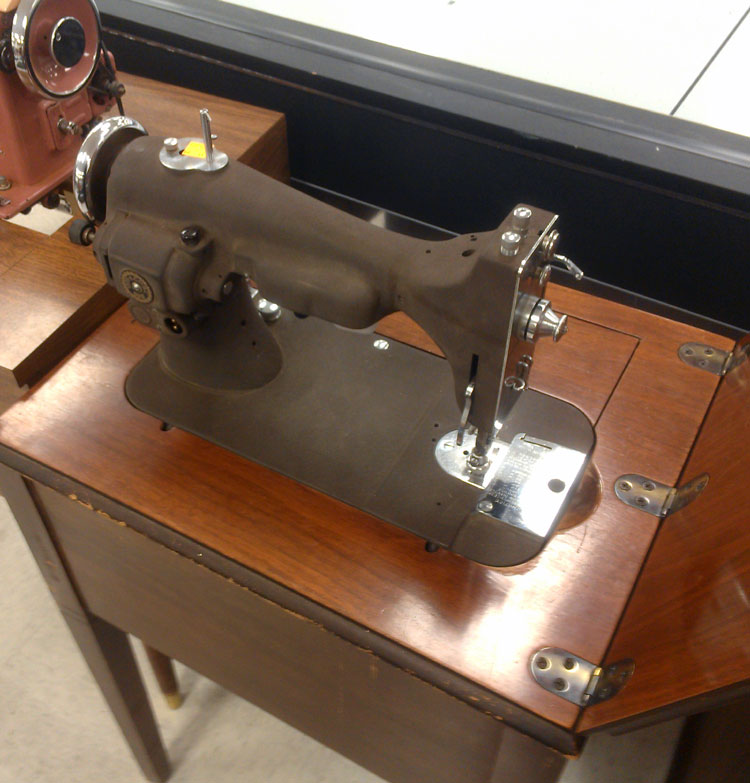
How could I not come running when sewing machines are mentioned? I love that peach-colored one; and she comes with a handsome table as well – just look at that lovely drawer pull!
I have seen many of these Brothers around here – they are usually a pretty, bright yellow and branded for the Swiss market with the name of one of the local department stores (Migros). BTW, any particular reason for referring to Montgomery Ward as Monkey Ward? :P
Yeah, I grew up with the idea that the store chain was actually named Monkey Ward until I was old enough to read and smart enough to read signs. Everyone called it Monkey Ward back then, rolls off the tounge easier than the 4-syllable “montgomery”.
Expect to see more sewing machine pics, I’ve been appreciating them more and halfway considering picking one up, since I actually do have a minor need for one. I just with I knew what I should be looking for. does one actually use a sewing machine to sew buttons back on, and does it make the process more likely to succeed? (I ask because my hand-sewing of buttons usually results in buttons too tightly sewn against the fabric, with gnarly, large knots tied behind them)
Hmm… I am sorry to say most sewists attach buttons by hand – it is easier to do and more accurate than trying to use a machine. This is because buttons are of different sizes and the holes are different widths apart, so it is a tricky trial and error getting them placed just right – one false step and you break either needle or button (ask me how I know). Besides, machines will also sew the buttons fast to the garment, as you are doing.
What you need is a proper tutorial on hand-sewing buttons nicely: I still remember the trick we learned many years ago about using a matchstick behind the button to give it some “lift” and making a thread shank after the sewing was completed. This may all sound a bit complicated until you see it in pictures, so let me point you to a few:
http://blognumbersix.blogspot.ch/2009/05/how-to-sew-on-button-with-thread-shank.html
oh, well that makes sense. Use a toothpick. got it! :D
Nice score! I was not familiar with this model.
Yesterday i finally found something worth getting at Vinnie’s. I’ll feature it on my blog soon.
good to hear! Hopefully these first spring findings are a prelude to a bountiful Spring Typewriter Hunting Season. :D
I re-read Robert Messenger’s comprehensive post on Brothers last night and noted he shows a Brother 440 (same shell, no tab) and a Signature 440TS (same shell, tab and auto-spacer), so it looks like Monkey Wards didn’t even actually change the shell. I’m beginning to wonder if this might not be a 1978 model because of the plastic shell, but Robert’s surmise about the serial numbers in the late 70’s and 80’s (the second number being a decade counter) doesn’t work then. (A88 would be 2038, I think).
Nice! I have only one Brother anymore, a Wizard True-type. I know you like them more than I do.
Adwoa, I don’t know what ancient wit started calling it “Monkey Ward” but I was hearing it in the ’70s so it goes way back.
Good find, congrats! Like Richard, I’ve never seen that model before.
Great find! I enjoy typing on my Webster XL-747, another Brother clone. Excellent little portable machines, made in Nagoya, Japan.
Was this one in clean condition when you got it? It’s amazingly free of debris and looks great!
yep, it had a little surface dust, but otherwise very clean. Paper bail is slightly bent, and that’s all.
Good to see you are still on the Newcastle Brown Ale. By odd coincidence, I just picked up a Brother deLuxe. Very cheap but in excellent condition. Now, the s/n suggests it too is 1968. February in this case. It is the familiar (iconic?) duck egg blue with the red hood ornament. Just from the looks of them, I wouldn’t have guessed they were the same age, give or take a month. I checked Mr. Messenger’s Brother write-up from a year ago. Is there room for doubt in the assumptions of your and Herr Schuman’s dating system? My Brother’s s/n is B 8868006 with full metal jacket.
I’m drinking one now! :D
Your Brother deLuxe has a metal shell, correct? Yeah, the plastic shell on mine made me doubt, but I’ve seen a copy of Source #6, which is the source for Schuman’s data, and it checks out. Also, the table contained in Mr. Messenger’s article on Brother is also Source #6, and I am leaning towards accepting his theory on the late 70’s/80’s models too. It seems sound.
Here’s the clincher, though: This *exact* Signature 440T in the 1968 Montgomery Ward’s Christmas Catalog! As Emeril would say: “BAM!”
BAM! indeed. I suppose to give plastic/ABS whatever it is a trade name it must have been the latest thing in the typewriter department of the time. Maybe these two brothers are significant as being at the cusp of the plastic revolution? Thanks for the clarification. Cheers!
It may have been a “different price points” thing. My ’70 Webster XL-747 is Full Metal Jacket also, so Brother was making both “Cycolac”-shelled and Aluminum-shelled machines concurrently. I just picked up the “Big Brother” Signature 511D, this one made in 1971 – and it also has a full metal shell.
I’ve got two MW 440’S. One is an older model cursive in a soft vinyl case and includes a “portable desk” that attaches with c-clamps. The other is the ABS plastic model like yours.
The ABS model types beautifully, but I’m missing the “E” key. If anyone knows where I can score a replacement cheaply, let me know. I do a lot of bicycling in Portland and have been thinking of making it my bicycle commuter typewriter, IF I can waterproof the case that is.
Ooh, I like the sound of the carrying case for your cursive one!
I just recently found another 440 exactly like this one except in Elite typeface. I really do love the way these perform, but still hate the plastic suitcase it comes in. :P
suggestion: try popping off the “@” key (or another that is super-rarely used) and putting that keytop on the “e” bar (:
Actually, Cycolac is anything but ‘flimsy’. When Remington used it in its new typewriters, the sales people demonstrated that it was actually stronger than the previous machines’ metal shells. I found this out from Tom Russo, of the Museum of Business History and Technology, in Wilmington DE. The museum has almost every Remington ever made, and he sold them for years. Cycolac is an ABS plastic that is super strong. An impact that would seriously dent the cover of a metal Remington would bounce off Cycolac. So you have a seriously strong machine there. (I love mine, which is the same, but yellow.)
Yeah, the 440T is still my favorite Brother machine. my only gripe is the big ears that make it not fit in anything but very large laptop bags, and I still hate the original case it came in. :D
Finally picked one of these up and just got done cleaning and repairing it. Great little machine and it looks so cool.
Agree. Still my favorite Brother model – I have 3 440T’s now. (: